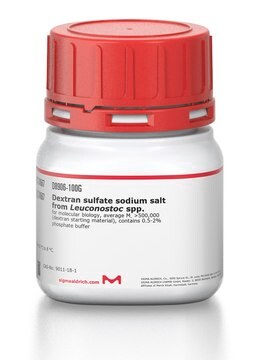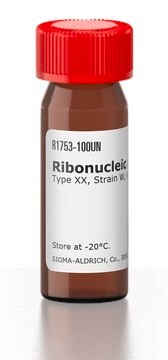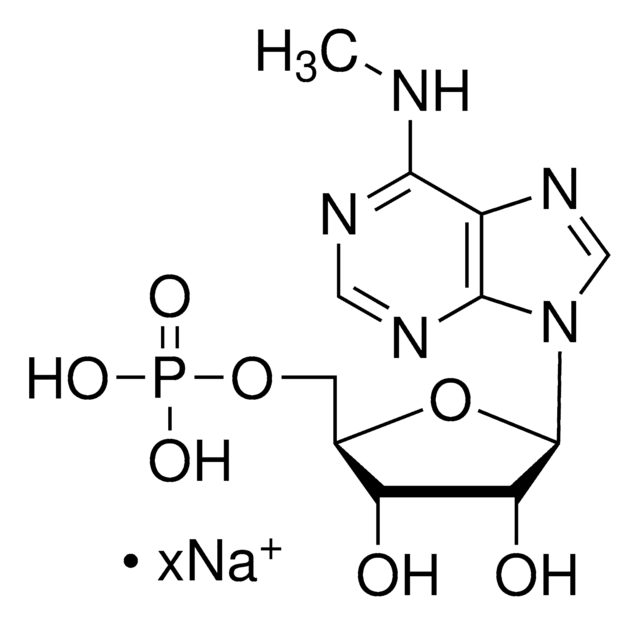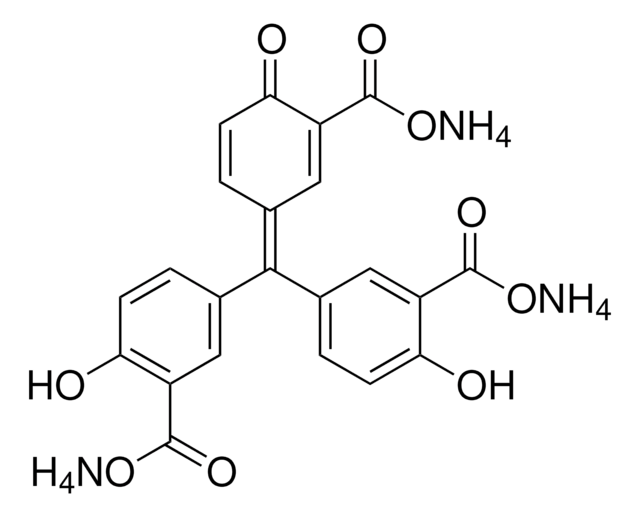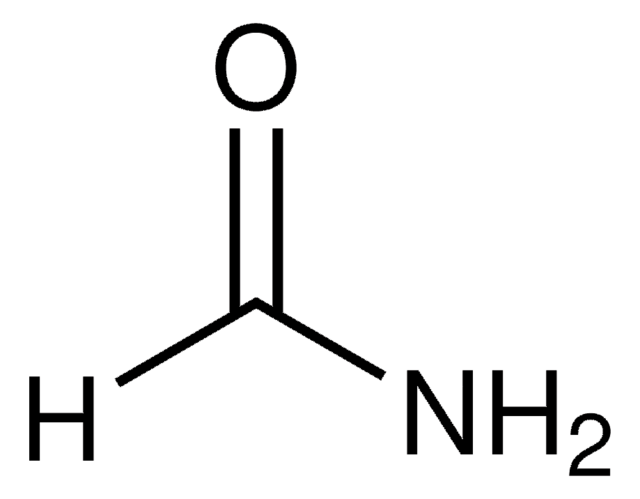94742
Vanadyl ribonucleoside complexes solution
BioReagent, for molecular biology, 200 mM
Synonym(s):
Ribonucleoside vanadyl complexes
Sign Into View Organizational & Contract Pricing
All Photos(1)
About This Item
UNSPSC Code:
12352200
NACRES:
NA.52
Recommended Products
grade
for molecular biology
product line
BioReagent
form
liquid
concentration
200 mM
impurities
oxovanadium V
suitability
in accordance for ribonuclease inhibition test
shipped in
dry ice
storage temp.
−20°C
General description
Vanadyl ribonucleoside complexes are low molecular weight inhibitors of ribonucleases.
Vanadyl ribonucleoside complexes solution is an inhibitor for ribonuclease (RNase). Use of vanadyl ribonucleoside complexes exhibits protection from degradation by RNase in tissue, genomic, RNA and protein samples.
Application
Vanadyl ribonucleoside complexes (VDR) are transition state analogs that bind to active sites of many RNases, inhibiting their activity. Because the RNases are not covalently modified by the complexes, VDR must be used at every stage of RNA extraction and purification. However, VDR also inhibit RNA polymerases and in vitro translation and therefore must be removed from final preparation of RNA.
Vanadyl ribonucleoside complexes solution has been used:
- as a component of polysome lysis buffer and fluorescence in situ hybridization (FISH) buffer
- as a RNase inhibitor for the isolation of endogenous YTH domain-containing 2 protein (YTHDC2) from mouse testes
related product
Storage Class Code
10 - Combustible liquids
WGK
WGK 3
Flash Point(F)
Not applicable
Flash Point(C)
Not applicable
Certificates of Analysis (COA)
Search for Certificates of Analysis (COA) by entering the products Lot/Batch Number. Lot and Batch Numbers can be found on a product’s label following the words ‘Lot’ or ‘Batch’.
Already Own This Product?
Find documentation for the products that you have recently purchased in the Document Library.
Customers Also Viewed
CARM1 and Paraspeckles Regulate Pre-implantation Mouse Embryo Development
Hupalowska A, et al.
Cell, 175(7), 1902-1916 (2018)
Wei Wang et al.
Nucleic acids research, 36(15), 4913-4928 (2008-07-26)
The mechanisms of influenza A virus mRNA intracellular transport are still not clearly understood. Here, we visualized the distribution and transport of influenza A virus mRNA in living cells using molecular beacon (MB) technology. Confocal-FRAP measurements determined that the transport
Inhibitors of RNases
Sambrook, J. and Russell, D.W. et al.
Molecular Cloning: A Laboratory Manual, 1, 7-7 (2001)
Isolation of polysome-bound mRNA from solid tissues amenable for RT-PCR and profiling experiments
Del Prete MJ, et al.
RNA, 13(3), 414-421 (2007)
Single-molecule Fluorescence in situ Hybridization (smFISH) for RNA Detection in Adherent Animal Cells
Haimovich G and Gerst JE
Proceedings of the National Academy of Sciences of the USA, 8(21) (2018)
Our team of scientists has experience in all areas of research including Life Science, Material Science, Chemical Synthesis, Chromatography, Analytical and many others.
Contact Technical Service


